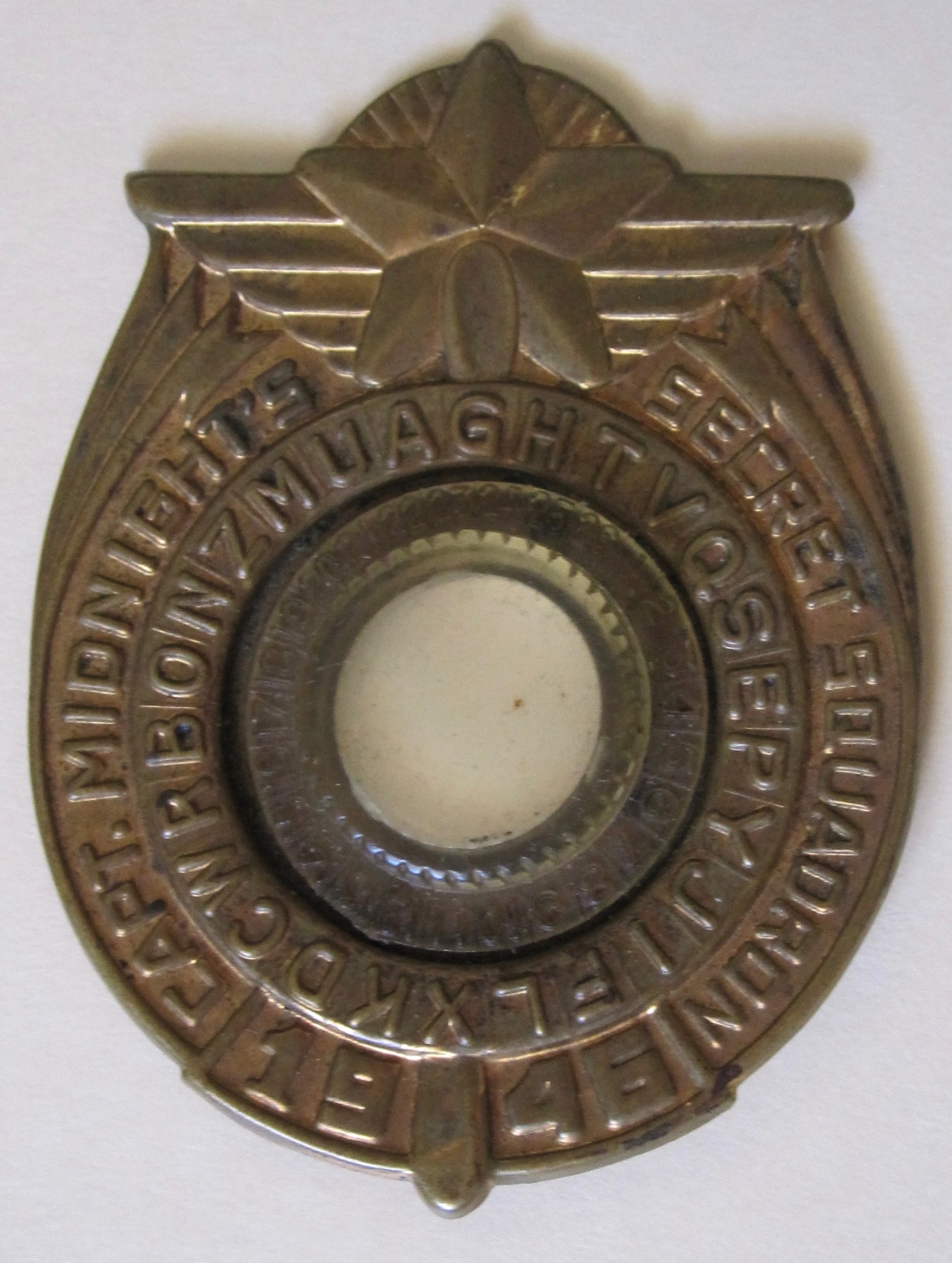Section 1.2 Cryptograms
For our first example of encryption and decryption techniques, we will examine common puzzles called cryptograms. While originally the word cryptogram meant any sort of encrypted message, currently it most often refers to a specific kind of cipher often found in newspapers and puzzle books. A cryptogram is a letter-for-letter substitution where each plaintext letter is replaced by a different ciphertext letter (or symbol) and it is replaced by the same ciphertext symbol wherever it appears in the plaintext. Word breaks are preserved and no letter is enciphered as itself. We'll start with an example.
Example 1.2.1.
Let's decrypt our first secret message! In this case we know the process for encrypting the message is the cryptogram process given above, but we don't know the exact letter for letter substitution that we should use. We will perform cryptanalysis to determine the letter for letter substitution and decrypt the message.
ZXPPNZZ JZ ED RPPJONEY. JY JZ KRAO VDAH CNAZNWNAREPN,
GNRAEJEL, ZYXOTJEL, ZRPAJMJPN REO FDZY DM RGG, GDWN
DM VKRY TDX RAN ODJEL DA GNRAEJEL YD OD. --CNGN
What patterns do you see that can help identify underlying plaintext? Remember that word breaks are preserved.
There are many strong letter patterns in the cipher text. One of the easiest places to start is two letter words.
For example, the two letter word combination JY JZ. There are relatively few two letter words that start with the same letter. The options are IN, IS, IT, IF and AS,AT,AM, and OR, OF, ON. Since the combination of two-letter words starts a senctence the most likely possibilities are IT IS or AS AN.
We also have the pattern JY and later YD. The repeated Y, one as a first letter and one as a second letter is a strong pattern. YD is most likely TO or SO. In either case, D must be O.
After two letter words, we might try three letter words.
Another strong pattern is RGG. Note all letters in the English letter make sense as double letters. And there are few three letter words with double letters. The most common are ALL or TOO. Since we have already guessed that D is O, we guess that RGG is ALL.
Another pattern that we might consider is common word endings.
Three of the words end in -JEL. One of the most common word endings is ING. So we guess JEL corresponds to ING.
In addition to word patterns, we can examine single letter patterns.
We might also consider the cipher word CNAZNWNAREPN. This single word has four Ns. And N occurs quite frequently in the cipher text. Thus we guess this letter corresponds to one of the most frequent letters in English, E, T, A, O, I, or N.
Use the guesses we have made for letters above and decrypt the rest of the message. After trying it out, you can check your answer. But try it on your own first!
AnswerThe plain text for the message is: Success is no accident. It is hard work, perseverance, learning, studying, sacrifice and most of all, love of what you are doing or learning to do. –Pele
As we saw in the previous example, there are lots of properties of the English language that help us to solve cryptograms. Some starting points for solving any cryptogram are short words, double letters, and frequency of letters. It is especially useful to know the following:
- The most common one letter words are: A, I.
- Common two letter words are: am, an, as, at, if, in, is, it, of, on, or, do, go, no, so, to, be, he, me, we, by, my, up, us.
- Common three letter words with repeated letters are : all, see, did, too.
- Other common three letter words are: the, and, for, are, but, not, you, any, can, had, her, was, one, our, out, day, get, has, him, his, how.
- Common four letter words with repeated letters are: that, will, been, good.
- Other common four letter words are: with, have, this, your, from, they, know, want, much, some, time.
- Common double letters include: LL,EE,SS,TT,OO,MM,FF,PP,RR,NN,CC,DD.
Investigation Time!
Time for you to decrypt some cryptograms in Investigation: Solving Cryptograms.
